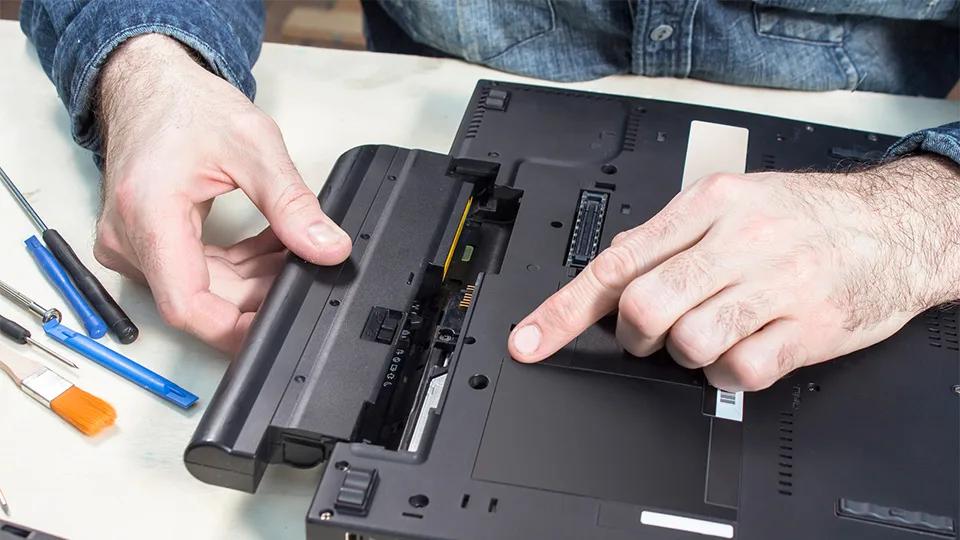How to Recycle Laptops Safely and Responsibly
Plus ideas for reusing your old laptop.
ByLauren Murphy Lauren MurphyWriterLauren Murphy is a writer and environmentalist based in the Pacific Northwest. She holds a degree in Environmental Sciences from Western Washington University.Learn about our editorial processUpdated November 27, 2021Fact checked byElizabeth MacLennan Fact checked byElizabeth MacLennanElizabeth MacLennan is a fact checker and expert on climate change.Learn about our fact checking processEnvironmentIn This ArticleOld laptops are typically not accepted in curbside recycling programs, but they can be processed through special e-waste recycling programs. And because laptops may contain valuable materials, including gold, silver, and platinum, recycling them is actually profitable, which means plenty of eager recyclers are willing to take them off your hands.
Since laptops do contain heavy metals and hazardous chemicals that can negatively impact the environment, they should be handled carefully and recycling should be left to the professionals.
Generally, all parts of a laptop are recyclable. Laptops consist of things like glass, metal, batteries, and electronic parts that can all be recycled at specialized facilities.
Some of a laptop’s electronic parts, like motherboards and hard drives, can even be sold and reused in refurbished products.
How to Prepare Your Laptop for Recycling
Your laptop likely contains sensitive personal information, like your bank account info and social security number. To avoid identity theft or scams, wipe your laptop of personal information before sending it to a recycler.
First, create a backup to save important data. Plug in an external hard drive and save every file you want to keep onto it. You could also save this data to a flash drive or put it in cloud storage. Then, you can easily transfer this data to your new laptop and clear it from your old one.
Wipe your old laptop’s hard drive by manually deleting the files and, to go a step further, using a shredding program to overwrite the files. You can then restore the computer to factory settings.
If your laptop won’t turn on for you to wipe it clean, you can remove the hard drive or destroy it to protect the data. The best way to destroy it is to drill through it or break the circuit board.
You may also need to remove your laptop’s battery to recycle that separately. Flip your laptop over and remove it before sending it to a recycler.
How to Recycle Laptops
If the environmental risks aren't reason enough to recycle your old laptop, consider this: recycling one million laptops can save enough energy to power 3,500 U.S. homes for an entire year.

Finding a reputable recycler may require some research. Begin by exploring the following options to ensure your device is processed responsibly.
There are several specialty electronics recyclers out there. But beware—there are scammers posing as recyclers who want to steal the personal information on your hard drive. That’s why wiping it before recycling is so important.
Another great step to reduce the risk of being scammed is doing your research and recycling your laptop through a reputable recycler, preferably one certified by the EPA.
Many electronics retailers offer takeback recycling programs for certain devices. Staples and Best Buy both accept laptops for recycling.
Some laptop manufacturers, like Apple and Dell, have similar takeback programs to accept used devices. Check with the manufacturer of your laptop for recycling options. Oftentimes, they will take care of the dirty work for you free of charge and may even give you a discount on a new device.
Ways to Reuse Laptops
If your laptop is still functioning (at least somewhat), then reusing it is a more environmentally responsible decision. Here are a few options to give your old device a second life.
In some cases, you can reuse the laptop for parts. You can save the hard drive to turn it into an external hard drive. You may also be able to recover its CD or DVD drive to use externally, which will come in handy if you have a small laptop or tablet that doesn’t come equipped with one.
You can also reuse your old laptop as an external monitor, as long as the monitor is in okay shape. Using multiple monitors while you’re on your new computer can help you work much quicker.
To do this, you’ll need to use an application to control your old laptop remotely or cables to connect your devices.
If you’re not experienced with electronic parts, you will likely need help from someone to complete this project.
Disassemble the laptop and fit the circuitry and the LCD display into a shadow box to transform it into a digital photo frame. You can then use a program to display a slideshow of your favorite photos, which can be a fun addition to the family room.
If there’s still room on your old laptop’s hard drive, you can turn it into a network-attached storage system (NAS) to add storage to your other devices. A NAS allows you to store data and share files with all computers connected to your network, which is especially useful when several people on your network need access to the same files.
Use an application to set up your NAS. Download the application and create a bootable USB or CD drive that facilitates quick and easy remote access to the laptop and its hard drive.
If you have no use for your old laptop that’s in working order, donate it to a charitable organization instead of recycling it. That way, someone else can get use out of it before the end of its life. Laptops under five years old are typically the best candidates for donation.
Donate your laptop at:
Or search for an organization near you that will accept them. Your local school system or library may gladly take a laptop off your hands to help students in need.








